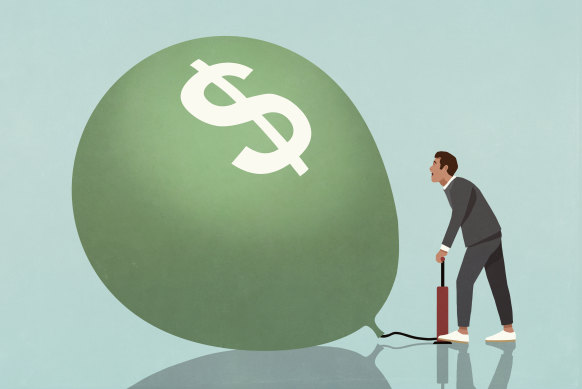Workers with large super balances warned to check for uncapped fees

Save articles for later
Add articles to your saved list and come back to them any time.
Super fund members with large balances are being urged to check if the administration fee they are paying on their retirement savings is uncapped, which could leave them at risk of being slugged by unnecessarily high fees.
Uncapped fees continue to grow in line with the fund’s balance rather than being limited to a certain level. An analysis of the administration fees of 113 funds by SuperRatings for this masthead shows about one-third have no cap at all, leaving members with higher balances paying more than if they were with another fund with a capped fee.
Those with larger superannuation account balances could be surprised by how much they are paying in fees.Credit: Getty
The higher the fees paid, the less that is left in the account to which the compounding of investment earnings is applied.
Though 70 per cent of the funds in the analysis limit or reduce the impact of administration fees on larger balances, more than 20 of these funds have caps set so high that they only cut-in for balances of more than $1 million.
Of the funds that cap or limit on their administration fees, the most common is where members are only charged up to a certain dollar value each year, regardless of how large the balance is.
Others have a tiered structure, where the percentage applied is reduced when a balance exceeds a certain size. A couple of funds rebate fees to the fund member’s account when they have paid fees beyond a certain level.
About 80 per cent of the no cap funds are “retail” funds – which operate to make profits for shareholders – and just under a third of those have some level of tiering, where the percentage reduces above a certain balance size.
The analysis reveals funds with very competitive administration fees include UniSuper, with a cap of $96 a year, Hostplus, which charges $78 a year, plus a 0.0165 per cent asset-based fee and REST, which has a fee of $78 a year and an asset-based fee, which is capped at $300 a year.
AustralianSuper charges $52 a year week, plus an asset-based administration fee of 0.1 per cent a year, with a cap on the asset-based component of $350 a year.
SuperRatings’ analysis shows the typical annual administration fee of a balanced investment option, where most people still working have their money, assuming a balance of $500,000, is $1,117 a year.
Investment fees are an even bigger cost for fund members. These are paid to the underlying fund managers. For a balanced option, the fee is of the order of 0.5 per cent a year, or $2,500 on a balance of $500,000.
The investment fees will vary, depending on the type of investment option chosen by the fund member. Investments that employ low-cost index managers, those that track markets, can have investment fees as low as 0.1 per cent, or $500 on a balance of $500,000.
“For members with higher balances, the impact of fee caps can be significant,” says Joshua Lowen, Insights Manager at SuperRatings, who carried out the analysis.
He says, while fees are an important consideration for members, it is worthwhile understanding what services and benefits funds provide members for the fees they are paying.
“If a member is thinking of making a change to their superannuation fund they can contact their fund for information and advice, or speak with a trusted adviser,” he says.
- Advice given in this article is general in nature and is not intended to influence readers’ decisions about investing or financial products. They should always seek their own professional advice that takes into account their own personal circumstances before making any financial decisions.
For expert tips on how to save, invest and make the most of your money, delivered to your inbox every Sunday, sign up for our Real Money newsletter here.
Most Viewed in Money
From our partners
Source: Read Full Article

